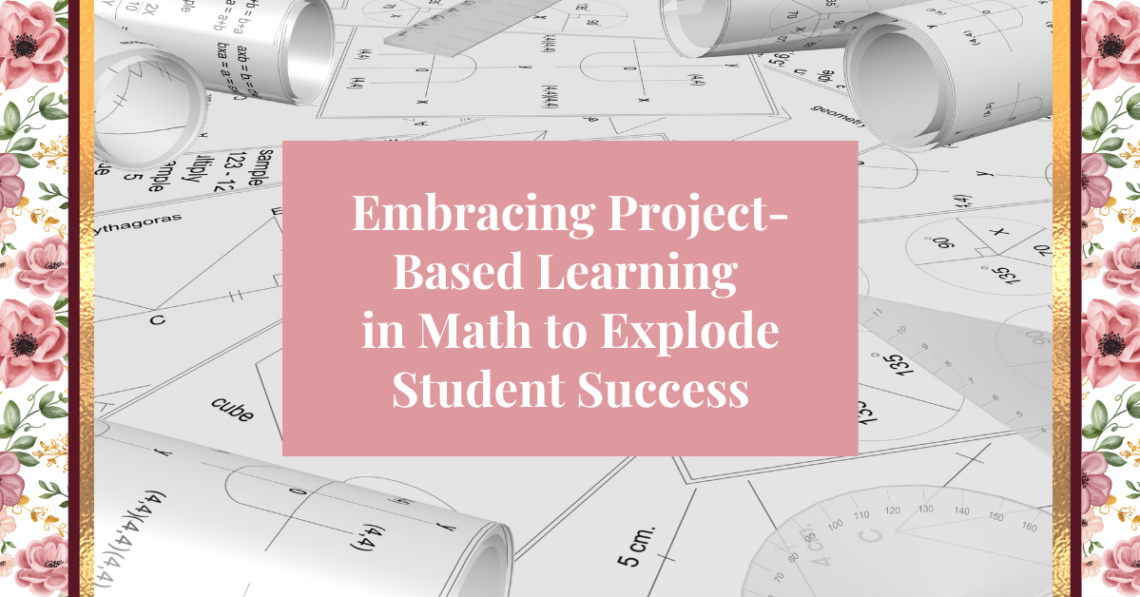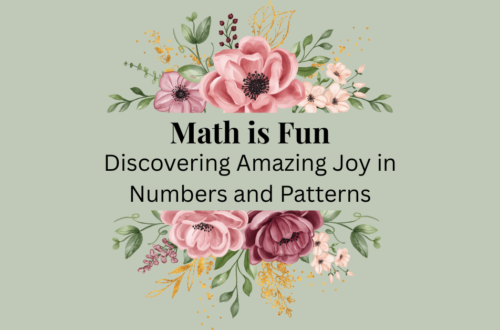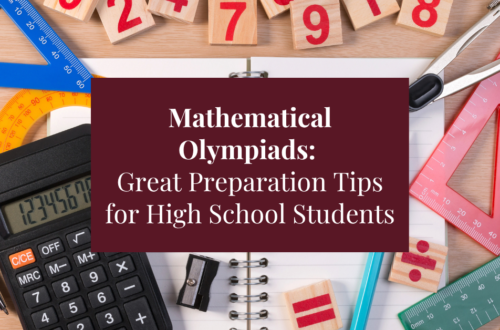Mathematics often gets a reputation for being abstract, complex, and sometimes, intimidating. Traditional approaches to teaching math often focus on rote learning, repetitive exercises, and abstract concepts that may not always connect with students in a meaningful way. However, there’s a powerful alternative that has been gaining traction in educational settings: Project-Based Learning (PBL).
Project-Based Learning is an instructional methodology that allows students to explore real-world problems and challenges in a hands-on, collaborative environment. By using PBL in math classrooms, we can engage students on a deeper level, encourage critical thinking, and demonstrate the relevance of mathematics in everyday life. In this post, we’ll explore how embracing PBL in math can ignite student success and transform the way math is taught and learned.
1. What is Project-Based Learning (PBL)?
Project-Based Learning is a teaching method in which students work on a project over an extended period of time, often weeks or months, to solve a real-world problem or answer a complex question. Unlike traditional math instruction, which may focus on isolated topics or skills, PBL emphasizes the integration of multiple concepts and the development of critical thinking, collaboration, and problem-solving skills.
PBL encourages students to take an active role in their learning. Instead of passively receiving information, they are tasked with investigating, applying, and presenting their solutions to a problem. In the context of math, this could involve anything from designing a budget for a community project to analyzing data trends in sports statistics or building a scale model of a bridge.
2. Why is PBL Effective in Math Education?
There are several reasons why Project-Based Learning is particularly effective in math education:
Real-World Relevance
Math often feels abstract to students because they don’t always see how it applies to the real world. PBL bridges this gap by placing math in the context of real-world problems. For example, students might use algebra to design a cost-effective solution for a local business, or apply geometry to solve a problem related to architecture or design.
Why It Works: Students can more easily see the value of math when it is used to solve tangible problems that they can relate to. This increases motivation and engagement.
Active Engagement and Ownership
In a traditional math class, students might listen to a lecture, take notes, and complete practice problems. PBL, however, requires students to take an active role in their learning by participating in the research, problem-solving, and decision-making processes. This ownership of their learning is a powerful motivator and helps students retain concepts more effectively.
Why It Works: When students are directly involved in creating solutions, they develop a sense of responsibility for their learning and become more invested in the outcome.
Collaboration and Communication Skills
PBL typically involves group work, where students collaborate and share ideas to solve the problem. In math, this can mean working together to design a project, divide tasks, and troubleshoot problems as they arise. These collaborative experiences also improve communication skills, which are crucial in both academic and professional settings.
Why It Works: Students not only improve their mathematical skills but also develop essential life skills like teamwork, leadership, and clear communication.
Critical Thinking and Problem-Solving
One of the core goals of PBL is to develop students’ critical thinking and problem-solving abilities. Math, by nature, requires logical reasoning and analytical skills, and PBL encourages students to use these skills in complex, often open-ended situations. Instead of simply following a set of steps to reach a known solution, students must apply their math knowledge creatively to find unique solutions.
Why It Works: This deeper engagement with the material helps students build a more robust understanding of math concepts and prepares them for more advanced challenges.
3. Examples of Project-Based Learning in Math
Here are a few examples of how you can incorporate PBL into your math curriculum:
Designing a Theme Park (Geometry and Measurement)
Students can work in groups to design a theme park. They will need to apply geometry to calculate the area of different attractions, determine the costs of construction materials, and ensure that the layout is both functional and safe. The project can include learning about angles, area, perimeter, volume, and even concepts like scale and ratios.
Skills Developed:
- Geometry (area, volume, angles)
- Measurement
- Spatial reasoning
Building a Budget for a Charity (Algebra and Financial Literacy)
In this project, students work with a local charity or organization to develop a budget for a specific event or initiative. They must use algebra to calculate costs, compare prices, and balance the budget. This project can teach them about financial literacy while strengthening their algebraic skills.
Skills Developed:
- Algebraic equations
- Budgeting and financial planning
- Data analysis
Analyzing Sports Statistics (Statistics and Probability)
In this project, students could collect and analyze data from a favorite sport or team. They can calculate averages, probabilities, and other statistical measures to compare player performance or predict future outcomes. This project brings math into a context that is engaging and meaningful for students who enjoy sports.
Skills Developed:
- Data analysis
- Probability
- Statistical concepts
Creating a Sustainable Community Garden (Environmental Math, Measurement, and Statistics)
Students could work together to design a community garden, calculating the space needed for different plants, measuring soil content, and analyzing climate data to determine the best plants to grow. This project integrates math with environmental science, making the learning experience interdisciplinary and hands-on.
Skills Developed:
- Measurement and estimation
- Data analysis (weather patterns, plant growth)
- Problem-solving in real-world situations
4. How to Implement PBL in Your Math Class
Start with a Driving Question
Each project should be centered around a central, guiding question that sparks curiosity and provides purpose to the task. For example, “How can we design a cost-effective bridge using basic geometric principles?” or “What’s the best way to budget for a school event?”
Set Clear Learning Goals
While PBL is student-driven, it’s important to set clear mathematical objectives. Define the math concepts that students need to understand and apply to successfully complete the project. This could include learning outcomes related to algebra, geometry, statistics, or other relevant areas.
Provide Support and Guidance
Although PBL encourages student autonomy, it’s essential to provide support and guidance throughout the project. Check in regularly with groups, answer questions, and provide feedback to help students stay on track.
Foster Collaboration and Communication
Encourage students to work collaboratively, share ideas, and communicate their findings. You can use online platforms or classroom discussions to help facilitate this collaboration.
Present and Reflect
At the end of the project, allow students to present their work to the class, explaining their process, their mathematical reasoning, and their final solution. This helps reinforce the concepts they’ve learned and gives them an opportunity to practice public speaking and communication skills. Additionally, encourage reflection on the learning experience, helping students recognize how their math skills apply in real-world scenarios.
5. The Impact of Project-Based Learning on Student Success
Project-Based Learning has been shown to increase student engagement, foster a deeper understanding of math concepts, and improve problem-solving skills. By working on real-world projects, students see the practical applications of math, which increases their motivation to learn and gives them the confidence to tackle complex problems. PBL also helps students develop critical life skills such as collaboration, communication, and project management, which are valuable in both their academic and professional futures.
Conclusion
Embracing Project-Based Learning in math is not only an innovative approach to teaching but also a powerful way to ensure that students succeed in understanding and applying mathematical concepts. By incorporating hands-on projects, real-world relevance, and collaborative work, we can help students build a deeper, more meaningful connection to math. Whether you’re a teacher seeking new ways to engage your students or a student looking to experience math in a more interactive and practical way, PBL provides an exciting and effective path toward success.
How have you used project-based learning in your math classroom? Share your experiences and ideas in the comments below! Let’s continue the conversation and inspire each other to create meaningful learning experiences for our students.





